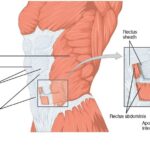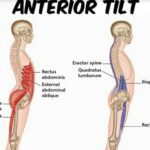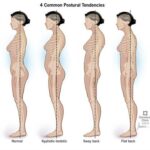With spring finally starting to show its face, comes the beginning of another race season when people start trading treadmills for sidewalks and indoor tracks for scenic trails. And with the start of another season, many runners find this time of year to be the perfect opportunity to break in a new pair of running shoes. With so many options on the market these days, it could certainly be overwhelming to find that special pair that will carry you well into the warmer months ahead. Whether you’re just starting to get back into shape or are in the midst of training for your fourth marathon this year, chances are you’ve seen and heard of the concept of minimalist running shoes. In general, minimalist running is running barefoot or with shoes that offer little or no cushion for support. The idea hit mainstream in 2009 with the publication of Christopher McDougall’s New York Times best seller, Born to Run in which the author and often-injured runner embarks on an adventure that began with one simple question: Why does my foot hurt? In search of an answer, he sets off to find a tribe of the world’s greatest distance runners and learn their secrets, and in the process intends to demonstrate that everything we thought we knew about running is wrong.
In order to understand this highly debatable topic of whether or not minimal and barefoot running is more beneficial to the athlete, let’s first take a look at the biomechanics behind a runner’s stride.
The structure of the human foot is a very complex. There are 26 bones in each foot including muscles, tendons, and other connective tissue. The major factor that any runner has to overcome, whether they wear shoes or not, is the sudden vertical impact of the foot hitting the ground. Simply put, running is a series of small jumps. Immediately after the foot meets the ground the weight of the entire body in motion is loaded onto that foot. On average the foot experiences over 2 times the bodyweight during and immediately after impact. This period is referred to as the stance phase of the running gait. The weight alone is not what makes this part of running significant, rather it is how quickly that weight is applied that causes so much stress on the body. It’s a belief that most running injuries are the result of those large forces during the stance phase. Therefore, any approach to running must involve a way of dealing with these forces in a way that does not lead to injury.
Many runners adapt a heel-strike gait, meaning the toes are pointing up (dorsiflexed) when the calcaneus (heel bone) strikes the ground first. Because of the the positioning of the calcaneus bone and the nature of the heel striking gait, all of the joints of the leg are lined up straight to receive the impact of the body weight, which over time, could lead to stress on the ankles, knees, and hips.
On the other hand, with the barefoot and minimalist approach, the foot and leg are positioned differently, resulting in a type of landing called the forefoot strike. In the forefoot strike the weight of the body is mostly positioned over the foot in stance phase. The knee is bent and the foot is plantarflexed (toes pointing down). In this way, the leg forms a number of levers that can absorb the initial shock of impact. The primary lever is the foot, holding the ankle as the fulcrum. The forefoot, or ball of the foot, is the area made up of the ends of the long metatarsal bones (where the toes connect to the foot). Allowing this portion of the foot to fall first and then slow the decent of the rest of the foot and subsequently the rest of the body greatly cushions the loading of the rest of the bodyweight. The design concept of minimalist shoes by creating a less structured heel and little, if any arch support is to promote this type of forefoot striking. However, before making the transition to these types of shoes, one must be informed of not only the benefits, but also some of the hazards as well. Below is a list of pros and cons to consider before purchasing your first pair of minimalist running shoes.
Pros:
- Strengthening of the muscles, tendons, and ligaments in the foot to help promote a more natural running gait.
- By decreasing the heel in most shoes, it will help stretch and strengthen the Achilles tendon and calf muscles during your stride which may prevent the risk of Achilles tendonitis. Instead of the heel acting as the main shock absorber, mid-foot and fore-foot striking allows for a smoother and more fluid landing where the medial arches of the foot act as the natural shock absorbers.
- Activating smaller muscles in the feet, ankles, legs, and hips helps improve balance and proprioception. Proprioception is the ability for us to sense the coordination of what our limbs are doing at a given moment.
- A study done by the Scandanavian Journal of Medicine & Science in Sports revealed that running in minimalist shoes (in this case, Vibram FiveFingers), improves running economy. Running economy is a measure of how efficiently your body uses the oxygen it takes in while running.
Changing to these types of shoes require a gradual transitioning phase so that the bones of your feet and lower legs can accommodate the difference in how your foot will impact the ground upon landing. If your bones do not have enough time to remodel and strengthen themselves to support the new impact action, injuries and pain can occur.
Cons:
Injuries that may result include:
- Stress Fractures: These are overuse injuries that occur when muscles become fatigued and are unable to absorb added shock. Eventually, the fatigue muscle transfers the overload of stress to the bone causing tiny hairline cracks in the bone. Stress fractures are often the result of increasing the amount or intensity of an activity too rapidly and could also be caused by the impact of an unfamiliar surface. Stress fractures in runners are most common in the metatarsals in the foot and tibia (shin bone) in the lower leg.
- Ankles Sprains: Minimalist shoes are made with the intention of simulating a natural running pattern and unlike traditional shoes that offer more ankle support, minimalist runners are more subjected to these types of injuries where the foot could easily roll in an undesired position, causing damage to the ligaments and surrounding muscles. Ankle sprains range in severity from range 1 to range 3 and are classified as follows: Grade 1: a small amount of ligament fibers are torn but the person still has full function. Grade 2: A significant number of ligament fibers are torn with moderate loss of function and joint instability. (Majority of ankle sprains are grade 2) Grade 3: All lateral ligaments on the outside of the ankle are ruptured with major loss of function and joint instability.
- Bone Marrow Edema: This condition is often caused by the body’s protective reaction in response to an injury or inflammation. When an injury occurs, whether it be a soft tissue bruise or a bone fracture, blood cells are sent to the injury site to initiate the early stages of healing. With bone marrow edema, swelling occurs from the bone’s interior cavity and in some cases could break from the inside out.
- One word: Blisters.
While the opinions of runners and health professionals vary on minimalist running shoes, there is a general consensus; if you plan on making the transition, START OFF SLOW and gradually increase your mileage. The bottom line is, the more minimal the shoe, the more active the muscles of the feet, ankle, and lower leg become. The bulkier the shoe, the more the shoe is doing all the work. Think of it as driving a car with stick shift compared to one with an automatic transmission. Both have their benefits, but at the end of the day, most importantly, both get you where you need to go.
References:
- http://www.runnersworld.com/barefoot-running-minimalism/study-vibram-fivefingers-lead-greater-risk-foot-bone-injury
- http://www.runnersworld.com/barefoot-running-minimalism/study-running-economy-improves-after-4-weeks-vibram-fivefingers
- http://www.runnersworld.com/barefoot-running-minimalism/should-you-run-minimalist-shoes
- http://www.livestrong.com/article/549692-what-is-minimalist-running/
- http://blogs.smithsonianmag.com/science/2012/07/is-barefoot-running-really-better/
- http://www.runnersworld.com/running-shoe-reviews/less-more
- http://condensedscience.wordpress.com/category/running/
- http://www.healthyanswers.com/general_articles/2013/03/minimalist-running-shoes-can-cause-bone-injuries/
- http://naturalrunningcenter.com/2013/03/22/gradual-transition-barefoot-style-running-shoes/
- http://www.drdavidgeier.com/injuries/tibial-stress-fracture/
This article and/or video are for educational purposes only; do not attempt without your physician’s clearance. If you are in pain or injured, see your physician.
Copyright © Vidal Sports LLC 2018






